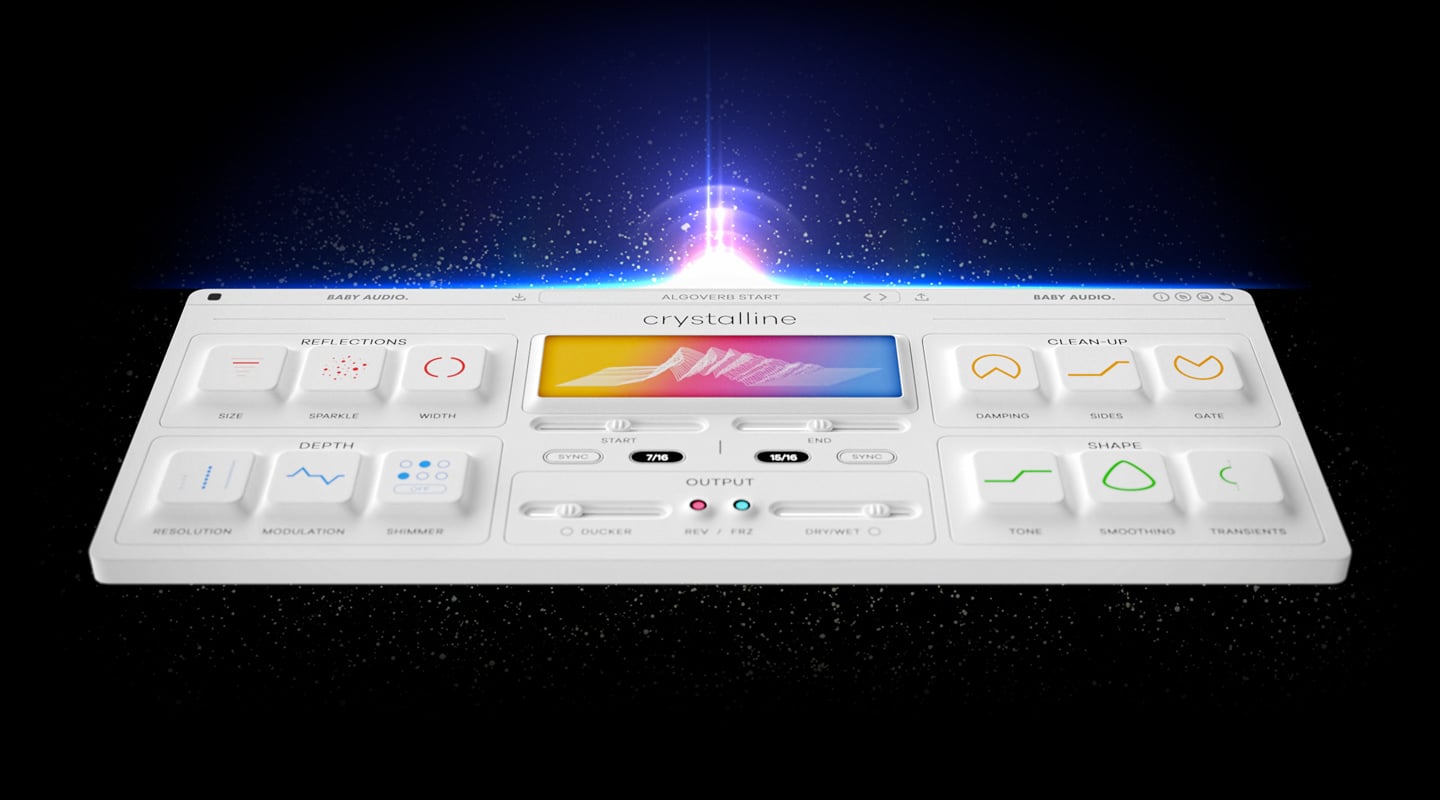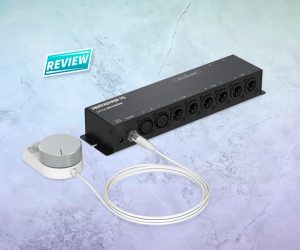
Chasing Your Tail
Crystalline next-generation algorithmic reverb
A ‘perfect algorithmic reverb’ is often considered the holy grail of digital audio effects. In fact, the idea can be traced all the way back to research papers from the 1960s. Throughout the 20th century, algorithmic reverbs evolved thanks to companies like EMT and Lexicon, but limited computing power at the time forced manufacturers to work within narrow constraints.
Fast forward, and we now have the resources to do things that couldn’t be done during the golden age of studio reverbs, both in terms of sheer sound quality, and of adding creative features that weren’t possible in the hardware days. Baby Audio’s Crystalline stands on the shoulders of 60 years of chasing ‘the holy grail of DSP’.
Crystalline offers the following features:
- BPM-Synced start and end times, which lets you hard-sync the reverb attack and decay time to your DAW’s tempo
- Reflections Section that allows control over parameters’ such as Size’, ‘Width’, and ‘Sparkle’ which emphasises high frequencies, generating brighter reflections
- Depth Section controlling ‘Resolution, ‘Modulation’, and ‘Shimmer’
- ‘Clean-up’ section which handles ‘Damping’, ‘Gate’, and the high-pass filter stage ‘Sides’ which removes stereo information from the low end of the reverb
- Shape Section for ‘Tone’, ‘Smoothing’, and ‘Transients’
- Output Section with ‘Ducker’, ‘Reverse’, ‘Freeze’, and ‘Dry/Wet’
- Top Panel for VST performance handling ‘Colour’, ‘Eco Mode’, ‘Save As Default’, ‘Reset’, and ‘Tool Tips’
There are two fundamental philosophies of reverb. One tries to mimic the sound of a real, physical space, while the other seeks to create an artificial space from an algorithm, free from the constraints of the natural world. The idea of an algorithmic reverb was first conceived in the 1960s – and evolved over the following decades, redefining the sound of modern music with every new technology leap. Crystalline follows in the tradition of the classic algorithmic reverbs, but adds new features and higher fidelity thanks to modern computing power, and is designed to sound ‘unreal’ in the most positive sense of the word.
Available at the introductory price of US$49 (RRP US$99)
Plugin formats: VST, VST3, AU, AAX and compatible with Mac M1
















RESPONSES